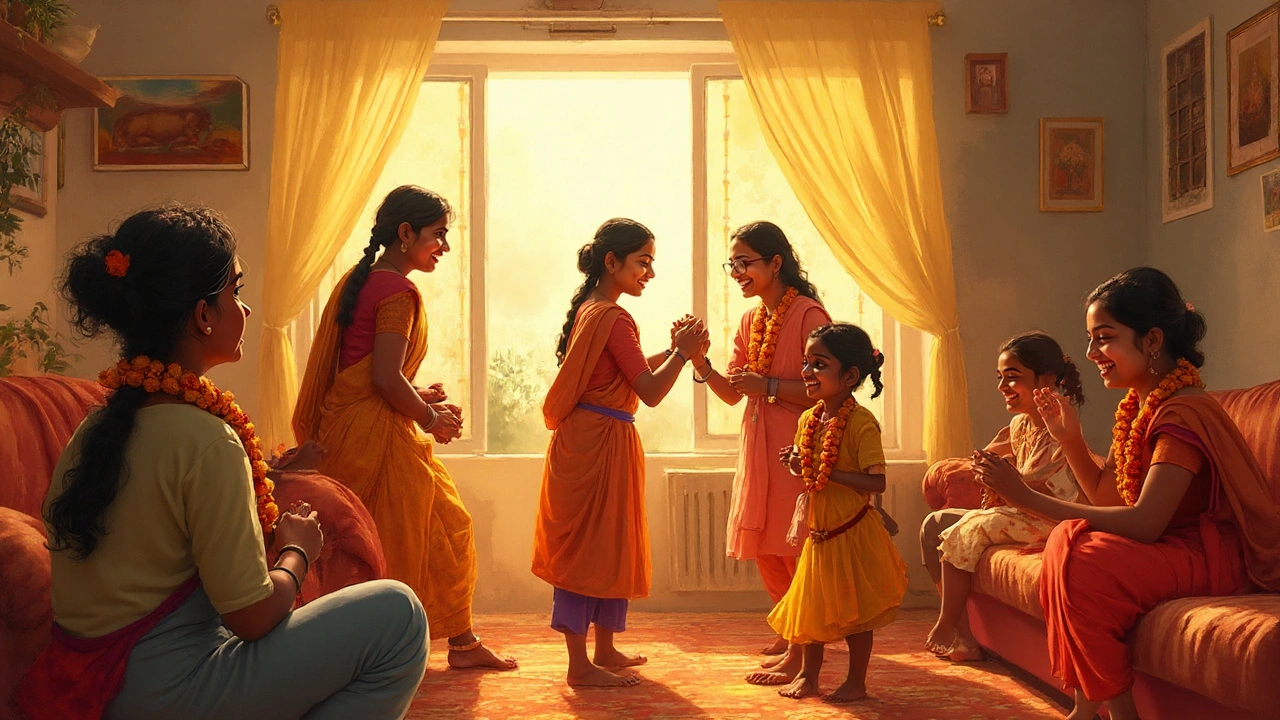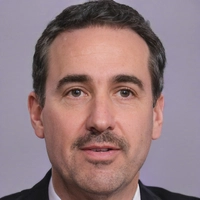
If you roll into Mumbai with ‘hello’ on your lips, chances are you’ll fit in just fine—at first glance. But peel back that shiny, cosmopolitan surface and you’ll discover the city’s greeting game is way richer. Mumbai’s the kind of place where languages, slang, and style-packed expressions all jostle for space, and knowing exactly how to say hello can crack open doors and lead to connections that most tourists miss. You could be standing in front of the Gateway of India or sweating through a train at Churchgate—whether you say hi, namaste, or something more local, you’re telling people you care about the city’s rhythm.
The Many Ways to Greet in Mumbai
Ask ten Mumbai locals how they say hello and half will give you a different answer each. India’s financial capital is a living language salad bowl, and the way people say ‘hi’ depends on where they live, who they’re speaking to, and even what mood they’re in. The classic ‘Namaste’ is big across India, including Mumbai. It’s polite, safe, and if you do it with joined palms and a smile, pretty much everyone will get the warm fuzzies.
But English is everywhere too. You’ll hear ‘Hello’, ‘Hi’, and ‘Good Morning’ around offices, schools, and when shopping. Don’t feel weird about using them—Mumbai’s English-speaking game is strong, and most people in the city speak at least a little. In fact, Mumbai was India’s first truly international city, and by the late 1800s, English had already snuck into daily speech. Fast forward to 2025, you’ll even see the odd ‘Wassup’ or ‘Hey’ on the street, especially from younger folks.
Then you have Marathi, the local state language. ‘Namaskar’ is the formal Marathi way, and a simple ‘Kaay Mhantaay?’ (What’s up?) is considered friendly. Marathi’s all over the government notices, buses, daily life—if you greet someone older or want to sound like you belong, ‘Namaskar’ or even a cheerful ‘Kem chho’ if you’re with the large Gujarati community is a safe bet.
But don’t stop there. Mumbai is home to one of the largest Gujarati populations outside Gujarat, and in many neighborhoods, ‘Kem Chho’ is just as standard as ‘Hello’. There’s even ‘Salaam’ for the city’s Muslim community, and in churches, you might hear the old-school ‘Praise the Lord’. If you’re near the fishing villages, the Koli community’s unique greetings make you feel like you’re in another world—‘Kai Zala?’ means “What happened?” but functions as a greeting there.
Bottom line: Mumbai’s not precious about one fixed greeting. Pick one, any one, and you’re halfway to starting a good conversation. But if you want to earn some street cred, toss in the occasional slang or local phrase. People appreciate the effort.
The Importance of Context: When and How to Use the Right Greeting
Now, don’t just memorize a dozen greetings and fire them off like a robot. Mumbai’s a city where the same person will say three different hellos to three different people, and context matters. Older folks love ‘Namaste’ or ‘Namaskar’. In a business meeting or formal context, stick to these or their English cousins (like ‘Good Morning’ or ‘Good Afternoon’). If you walk into a shop or a taxi, a simple ‘Hi’ or even a nod usually does the trick.
With friends, don’t be surprised by Mumbai slang. Try “Kya bolta hai?” (What’s up?) or the famous “Aye, bhai!” (Hey, bro!). You’ll hear this everywhere from street food stalls to cricket matches in the park. It’s friendly, informal, perfect for when you’re hanging out and want to seem in the know.
If you’re on a crowded local train and need to get someone’s attention, a soft ‘Excuse me, bhaiya’ (brother) works wonders. Taxi drivers or auto rickshaw wallahs respond well to a smile and a “Bhaiya”—it cuts the formality, feels warm, and signals you’re a regular, not a stuck-up tourist.
Here’s a tip I learned from personal experience (and from my wife Nalini shaking her head at my rookie mistakes): If you’re in a group, address the elders with ‘Namaste’ or ‘Namaskar’. Peers or younger people? English or local slang is perfect. At religious places, stick to the traditional greeting—consider ‘Ram Ram’ at temples, ‘Salaam’ at mosques, or just a gentle ‘Hello’ at churches.
Body language matters too. Join palms with ‘Namaste’ or ‘Namaskar’. Nod and smile with ‘Hello’. Younger people often do the “head bob” with a casual hi or wave—don’t overthink it, just follow their lead. Mumbai’s all about reading the room.

Mumbai Slang: Adding Some Local Flavor
If you’re hungry for a more real Mumbai flavor, listen out for the city’s unique street slang. There’s a playful code of greetings, catchphrases, and in-jokes. Mumbai’s tapori lingo is famous. ‘Kya scene hai?’ (What’s the scene?), ‘Bindaas hai kya?’ (All good?), and ‘Jhakaas!’ (Awesome!) all pop up in friendly hellos.
And if you want to go a step further, local stars like Anil Kapoor made ‘Jhakaas!’ legendary in Bollywood. It’s not just a word—it’s a vibe. Use it with friends when you’re feeling pumped. Want something lighter? Try ‘Bhai, kya bol?’ or ‘Boss, kaise ho?’ You’ll get a smile or a laugh, because the city loves it when people try to speak the dialect—even if they mess up a little.
Don’t ignore the cutting chai culture. You’re at a tea stall and hear people toss out “Aye, cutting dena!” (Give me a half glass of tea!) often paired with quick-fire hellos. Everyone’s in a hurry but the greetings still matter. It’s how locals stay connected in the daily chaos.
Bargaining at markets? Sometimes a friendly ‘Madam, kya chahiye?’ or ‘Boss, dekho na!’ works just as well as a formal hello. Every line in Mumbai is a possible opening to friendship or, at least, a good-natured argument over prices. Often, these interactions start with a greeting that shows respect but keeps things light.
You’ll also hear some English-Mumbai hybrid speak like “Hello, hain na?” (Hello, right?) or ‘Hi re baba!’ (Oh hi!)—a nod to Marathi’s influence. The key is not to sound rehearsed. Mumbaiites love genuine attempts. You’ll win points for spirit, not perfection.
How Greetings Shape Mumbai’s Social Life
There’s more at play here than just words. Greetings in Mumbai help set the mood for every interaction. Start with ‘Namaste’ at a formal dinner, and you’ll notice the host sits up straighter. Walk into a friend’s home with a cheeky ‘Salaam wale kum’, and you’re instantly at ease. You can even see families switch gears between Hindi, English, Marathi, or a dozen other tongues in the same conversation—all to set the tone right.
The train platforms at rush hour are a crash course in Mumbai’s greeting culture. In the chaos, a smile and a nod often do the trick. Office elevators? You’ll hear ‘Good Morning, sir’ or ‘Hello, madam’. But step into a street cricket match, and all bets are off: ‘Arey, champ!’ or ‘Guru, ball de!’ are everywhere.
This mix of greetings makes Mumbai one of the easiest places to talk to strangers, but also one where social lines matter. A street vendor will greet a loyal customer with a big smile and ‘Bhai, kitna lenge?’ while keeping it formal with new faces. At parties, you’ll notice people orbit between English, Hindi, and Marathi greetings. Every change hints at relationship—are you friends, strangers, or somewhere in between?
And honestly, Mumbai’s nothing if not a big, swarming, city-sized family. Use a local greeting and you’ll see people’s faces relax. You can start meaningful conversations, get better deals, avoid rookie mistakes, and even find help faster. It’s not about the exact word you use, it’s how you use it—Mumbai rewards warmth over perfection.

Tips for Non-Locals: How to Nail a Mumbai Hello
If you’re not from Mumbai, don’t sweat it. Here are some ways to make your greeting game stronger—and maybe score yourself a few smiles along the way:
- Start with ‘Namaste’ or ‘Namaskar’ if you’re nervous. Nobody will think you’re old-fashioned, promise.
- Switch to English if you’re in a mall, office, or café. Simple ‘Hello’ or ‘Hi’ works everywhere.
- Try informal slang with people your age: ‘Kya bolta hai, boss?’ or ‘Aye, bhai!’ signal you’re comfortable and open to chat.
- Watch the locals—mimic their greeting styles and body language. Mumbaiites are pros at mixing styles.
- When you mess up (and you will at some point), just laugh it off and try again. Mumbai loves effort more than pedigree.
- If someone greets you with a phrase you don’t know, repeat it back with a smile. They’ll probably explain, and you get a free language lesson.
- Remember little gestures—join your palms for Namaste, wave when you say hi, or nod if your hands are full (happens a lot in the local trains).
- Don’t overthink; Mumbai is speedy and direct. Greet fast, keep moving, especially in crowded places.
Last bit of advice from personal life: I once froze at a wedding because I couldn’t remember whether to say Namaste or shake hands. Ended up blurting ‘Hi, Namaskar, Hello’ all at once—got laughs, love, and a third helping of biryani. In Mumbai, sincerity trumps skill every time.
So, next time you’re in Mumbai and someone flashes you a big friendly smile, toss them a ‘Namaste’, a ‘Hi boss’, or even a ‘Kem Chho’ and watch the magic happen. Whether you’re trying to fit in or just want a better cup of chai, the right greeting—and the warmth behind it—opens doors everywhere in this city.
